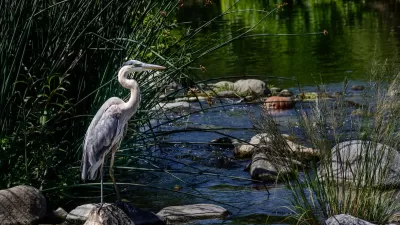When Los Angeles drained Owens Lake to bring water into its quickly growing urban basin, it simultaneously created a dry lakebed and one of the worst dust pollution problems in America. Various efforts to fight the problem have only failed.
In this essay for Places, Karen Piper, a former resident of the area, recounts the many efforts half-started to counteract the dust problem and how those failures have negatively impacted the areas around the lakebed.
"I grew up near Owens Lake, and I breathed in its dust for close to 20 years. I remember that the experience of walking on the lakebed felt like walking on the moon, with its white crusty surface pocked by shadowy craters and peaks of crumbling crystallized salt. Unfortunately, this dust is not the kind that you can simply breathe out. It has been shown to embed itself in the lungs for life, and it is carcinogenic. In 1987 the Environmental Protection Agency declared Owens lakebed to be the worst dust pollution problem in the United States, affecting around 50,000 people. By then the dangers of this kind of fine dust were well known. But it's a complicated story, of course, and to those of us who have followed it - lived it - the decision about whom to help and whom to hurt had already been made, decades ago. In 1906 President Theodore Roosevelt decided that the waters of Owens River should go to Los Angeles because the city was where it would do the "greatest good for the greatest number." "This water is more valuable to the people as a whole," he said, "if used by the city than if used by the people of the Owens Valley." [2] Over the decades the people of the Owens Valley came to understand that the "people as a whole" did not include us.
So when in the late '80s the EPA mandated that the City of Los Angeles fix the problem of the Owens Valley, and do so within ten years, this came as a surprise. But the ensuing events suggest that the kind of engineering ingenuity that had once made it possible to move the waters was unavailable decades later for the equally large-scale job of remediating the damage that had been done."
FULL STORY: Dreams, Dust and Birds: The Trashing of Owens Lake

Alabama: Trump Terminates Settlements for Black Communities Harmed By Raw Sewage
Trump deemed the landmark civil rights agreement “illegal DEI and environmental justice policy.”

Planetizen Federal Action Tracker
A weekly monitor of how Trump’s orders and actions are impacting planners and planning in America.

The 120 Year Old Tiny Home Villages That Sheltered San Francisco’s Earthquake Refugees
More than a century ago, San Francisco mobilized to house thousands of residents displaced by the 1906 earthquake. Could their strategy offer a model for the present?

In Both Crashes and Crime, Public Transportation is Far Safer than Driving
Contrary to popular assumptions, public transportation has far lower crash and crime rates than automobile travel. For safer communities, improve and encourage transit travel.

Report: Zoning Reforms Should Complement Nashville’s Ambitious Transit Plan
Without reform, restrictive zoning codes will limit the impact of the city’s planned transit expansion and could exclude some of the residents who depend on transit the most.

Judge Orders Release of Frozen IRA, IIJA Funding
The decision is a victory for environmental groups who charged that freezing funds for critical infrastructure and disaster response programs caused “real and irreparable harm” to communities.
Urban Design for Planners 1: Software Tools
This six-course series explores essential urban design concepts using open source software and equips planners with the tools they need to participate fully in the urban design process.
Planning for Universal Design
Learn the tools for implementing Universal Design in planning regulations.
Clanton & Associates, Inc.
Jessamine County Fiscal Court
Institute for Housing and Urban Development Studies (IHS)
City of Grandview
Harvard GSD Executive Education
Toledo-Lucas County Plan Commissions
Salt Lake City
NYU Wagner Graduate School of Public Service




























